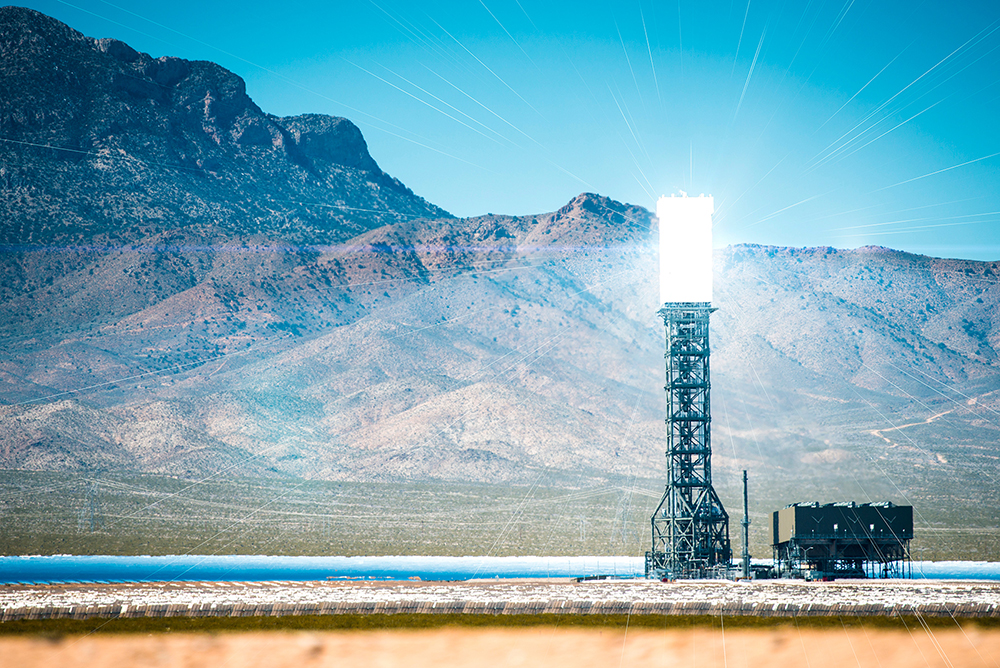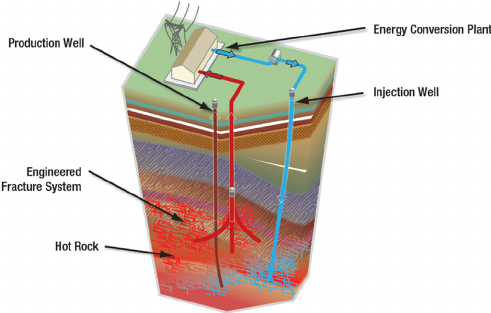A grant from the Department of Energy aims to cut the cost of new geothermal systems generating electricity located underground. The Department of Energy will provide $74 million for geothermal pilot projects that tap into heat sources located several miles underground, in an effort to unlock massive amounts of renewable electricity. The funding, announced will amount to seven pilot projects. Grant recipients will test whether a new type of geothermal technology called EGS, EGS-enhanced geothermal systems can be an economical way to convert heat almost anywhere on the planet into electricity. This is part of the Biden administration’s efforts to halve greenhouse gas emissions by 2030 and switch to a zero-carbon grid by 2035. Geothermal power has been an efficient way of generating energy for decades. century, but it is currently limited to some areas with active volcanoes, hot springs and geysers.

DOE funding aims to access heat buried deep inside the planet, which is theoretically available everywhere. While current geothermal plants use hot water from geysers to power turbines, ESG efficiently builds man-made geysers. This method generates carbon-free power by injecting a stream of cold, high-pressure water into the rock, where it is heated and then moved through pipes back above ground. More than 5 terawatts of thermal resources exist in the United States, which, according to the DOE, is enough power to meet the entire world’s electricity needs. A recent analysis from agency projects shows that the successful development of the EGS could supply 90 gigawatts of power to the U.S. grid by 2050. Stuart Simmons, research professor at the Institute of Energy and The fascinating thing about EGS over conventional geothermal systems is that it takes advantage of heat everywhere, on every continent, at depths of five to 15 kilometers, said geologists at the University of Utah. Research fellow at the Institute of Energy and Geology at the University of Utah. The funding will provide seed investments to mitigate technology risk and aid its geographical spread.
Like power plants and coal-fired power plants, geothermal systems can accommodate fluctuating energy needs. That means they complement solar and wind power, and are susceptible to changing weather conditions, said Mark White, a geothermal expert and a mechanical engineer at the Pacific Northwest National Laboratory. said. An EGS system, for example, could theoretically increase power output during peak demand by increasing the flow of water injected into the rock.

Simmons says the high cost of drilling is the biggest challenge to building a commercially viable EGS. Developers will need a very hot fluid to generate electricity efficiently, which means they will need to drill several miles into the Earth’s crust, making projects expensive. Minimizing drilling costs is key to achieving DOE’s goal of reducing geothermal production costs from 90% to $45 per hour by 2035. Both Simmons and White say costs have fallen in Lately year. Simmons, a large EGS pilot project, has found a way to reduce drilling time by 20 to 30 percent, resulting in cost savings, said Simmons, who also worked on the project. This method is similar to that used by the oil and gas industry in fracking. The developers first drilled a high-pressure water hole and pumped the water to crack the rock underground. A second well then pumps up water, now hot as it flows through the cracks. Successful EGS projects require multiple rift rings to connect those two wells – drilling skills that the hydraulic fracking industry mastered nearly a decade ago. Enhanced geothermal systems could provide a valuable opportunity for the oil and gas industry to transition to a low-emissions business with their existing expertise and capital investment, White said. “You see a lot of these oil companies are very interested in geothermal right now because there is a natural transition from fracking operations expertise to geothermal,” Mr. Simmons said.



